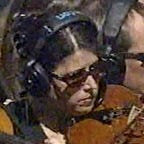RoTan Clan
Blogpost #3
by Weber/Laughlin/Campbell/Hisey
Living Through The Shattering
Thus far, we have explored Annie G. Roger’s work on the effects of trauma as she described the shattering of one’s voice and the need for a therapist to learn a new language of trauma. Later we examined the distinction between what we know and what we think we know and how this distinction impacts our ability to effectively listen. A few questions arise as we consider sitting with someone and their story in light of shattered voices and fragmented understanding. What were we meant for? Does our story matter? Where are we going?
Dan Allender speaks to what we were meant for as he describes lives intended for Shalom, or peace. He describes Shalom as “a deep inner and external harmony….”¹ Life in general, but particularly stories of trauma, very quickly indicate to us that Shalom in this life has been shattered. Allender proposes that the journey from trauma back to Shalom, to knowing more of the manner of life that was intended, begins with examining the particularity of one’s story.² This highlights the need for a community of people/therapists who can bear witness, and in time hopefully bring language, where voices have been shattered and stories have become “unsayable.”³
Resmaa Menekem further speaks to the concept of inter-generational trauma and specifically that of racial trauma that has occurred to both white and black bodies throughout history. Menekem seems to share Rogers’ view on the shattering of language as he points out that our bodies store knowledge of trauma as “wordless stories about what is safe and what is dangerous.”⁴ According to Menekem, the body’s response to perceived danger is not based on cognitive reasoning or emotions, but rather “physical, visceral sensations.”⁵ A sense of safety is either felt in the body or it is not. The body’s response to seek safety and to survive is classically categorized into responses of fight, flight or freeze. When fighting or fleeing are not available options, the body can become stuck in freeze mode. In the “stuckness,”⁶ many survival strategies are often developed that lead to long-term unwanted feelings and behaviors. “ When these strategies are repeated and passed on over generations, they can become the standard responses in families, communities, and cultures.”⁷ In this way, we see throughout history the shattering of Shalom and the need to find new language to begin healing ourselves, our communities, and our cultures.
Returning to Allender, he suggests that the path out of the stuckness that Menekem describes is through grieving the loss that the shattering of our Shalom represents. It is through witness and hopefully finding language that we are able to grieve the shattering, and find new ways of trying to break the stranglehold of past harm.⁸ And yet it seems that the road to Shalom, to peace, is quite complex with many turns and even setbacks. It may better be described as layers of complexity whose depths are unknown. On this journey, there may always be places that remain without language, that remain unsayable.⁹ However, according to Allender, it is hope that we hold on behalf of another that we may together find language one day, so that something more of peace may be found.¹⁰
Shelly Rambo speaks of a middle space between life and death which becomes a space of suffering. She describes the wound of this middle ground as demanding a witness to the death that has come to visit and the to the life that hopes to be found again.¹¹ The middle space that Rambo considers seems congruent with Allender’s pursuit of grief in order to find life; the pursuit of which is complex, messy, and lifelong.
As we sit with story, how will we consider both the individual trauma and complexity of inter-generational impact? Will we try to learn a new language to listen and bear witness to the unsayable, especially when language is not easily found, if ever? Will we be able to hold hope on this journey of discovery in the midst of all that we do not and may not ever know, that language possibly may come, that strongholds may be weakened and hope for new life when it cannot yet be imagined?
Endnotes:
- Dan Allender, To Be Told: God Invites You to Co-Author Your Future (Colorado Springs, CO: WaterBrook Press, 2005), 41.
- Ibid., 41.
- Annie G. Rogers, The Unsayable: The Hidden Language of Trauma (New York: Ballantine Books, 2007), 25.
- Resmaa Menakem, My Grandmother’s Hands: Racialized Trauma and the Pathway to Mending Our Hearts and Bodies (Las Vegas, NV: Central Recovery Press, 2017), 8.
- Ibid., 7.
- Ibid., 8.
- Ibid., 8.
- Allender, To Be Told, 45.
- Rogers, The Unsayable, 25.
- Dan Allender, “Faith, Hope, and Love.” Class lecture, The Seattle School of Theology and Psychology, Seattle, WA, November 19, 2019.
- Shelly Rambo, Spirit and Trauma: A Theology of Remaining (Louisville, KY: Westminster John Knox Press, 2010), 35.
Bibliography
Allender, Dan. To Be Told: God Invites You to Co-Author Your Future. Colorado Springs, CO: WaterBrook Press, 2005.
Allender, Dan. “Faith, Hope, and Love.” Class lecture, The Seattle School of Theology and Psychology, Seattle, WA, November 19, 2019.
Menakem, Resmaa. My Grandmother’s Hands: Racialized Trauma and the Pathway to Mending Our Hearts and Bodies. Las Vegas, NV: Central Recovery Press, 2017.
Rambo, Shelly. Spirit and Trauma: A Theology of Remaining. Louisville, KY: Westminster John Knox Press, 2010.
Rogers, Annie G. The Unsayable: The Hidden Language of Trauma. New York: Ballantine Books, 2007.
